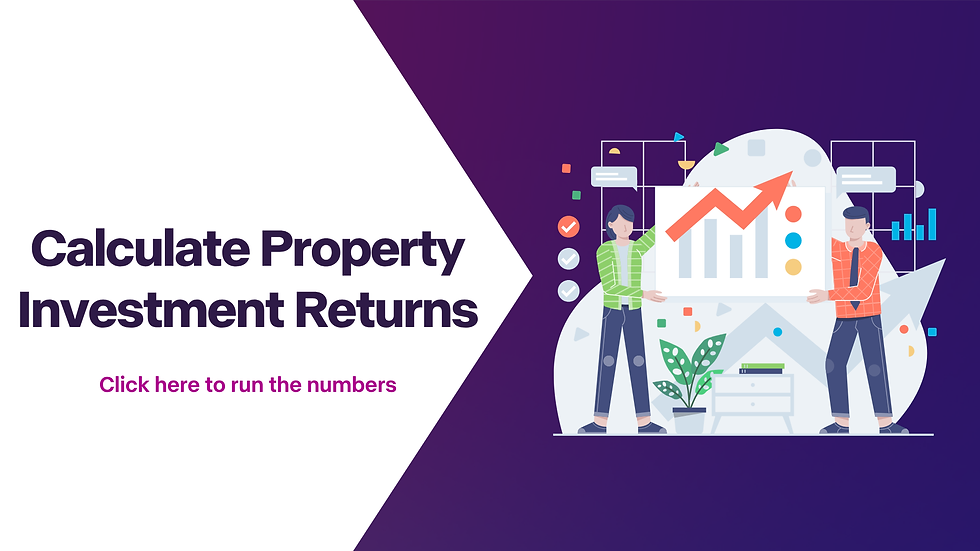How To Make Money by Off-The-Plan Property
- Ryan Smith
- Oct 26, 2022
- 4 min read
Updated: Aug 5
There is profit to be made when investing in off-the-plan property if you know what to look for.
Buying an off-the-plan property 12 to 18 months out from completion might feel like a leap of faith, especially for first-time investors.
You can’t touch the walls, see the views, or walk through the space. There’s a lot that exists only on paper.
Yet, savvy investors are still chasing off-the-plan property deals because they know that if they get in early, they will have access to one thing no one else will:
The “Build Premium.”
What Is the Build Premium?
The build premium is the equity gain investors make between the price they buy at and the value of the property at settlement. It’s a margin that can sometimes amount to tens, or even hundreds, of thousands of dollars.
Think of it as capital growth… just compressed into the construction phase rather than earned slowly over the years.
And unlike market-driven growth, this premium is often baked into the sales strategy of the developer.
Why Early-Stage Pricing Is More Attractive
There’s a reason why early-stage units are cheaper. It’s not just about being first; it’s about helping the developer tick some very specific boxes:
Pre-sales targets: Most developers need to sell a certain percentage of the project to unlock funding from banks or lenders. That means stage one buyers are crucial, and rewarded with more aggressive pricing
Break-even strategy: In large-scale developments (20+ units), it’s common for developers to accept thinner margins, or even break-even, on the first few sales to get the ball rolling. They make their real profit in the later stages when pricing increases
Risk exchange: The buyer takes on more risk (construction, market conditions, timeline), so the developer offsets this by offering a lower price point
Real-World Impact: Price Differentials Over Time
Let’s say you buy a unit in Stage 1 of a 40-unit townhouse project at $700,000.
By the time Stage 4 hits the market (closer to completion), the same unit might be listed at $7400,000.
That’s a $40,000 increase on paper, without you lifting a finger.
In some extreme examples across NZ’s hottest markets, the price difference between early-stage and end-of-project sales has reached $200,000.
And even at more conservative levels, say, $30,000 to $50,000, that margin can make or break your overall investment returns.
But What About Completed or Near-Completed Properties?
Here’s the trade-off: completed or near-completed stock sells for a convenience premium.
Buyers are happy to pay more for instant settlement and reduced perceived risk. But that means:
Higher purchase price
Lower yields
Greater upfront capital required
So while the shiny, ready-to-go unit looks tempting, it often makes less financial sense, especially if you're investing for yield or capital growth.
Investor Tip: Know When the Risk Is Worth the Reward
Buying early in a quality development gives you a head start, but only if you do your homework.
Key things to watch:
Is the developer reputable with a strong track record?
Are the price increases between stages clearly defined?
Have you run a valuation or consulted with your mortgage broker to estimate the end value?
Does the project suit long-term rental demand (location, floor plan, transport links, etc.)?
If you can tick those boxes, then the short-term uncertainty of buying early might be your best chance to lock in built-in equity before the market ever gets involved.
Final Thoughts
Yes, buying off-the-plan comes with risk, but it also comes with opportunity.
Investors who understand the “build premium” aren’t just speculating, they’re playing the system smartly. They’re leveraging the development model itself to their advantage, getting in when prices are low and watching their investment grow even before the paint is dry.
In a market where every dollar counts, the build premium might be your best-kept secret to fast-tracking capital growth.
How Can We Help You?
We help Kiwis build wealth through property investment. Our advisors will take the time to understand your individual needs and recommend suitable investment properties to help you build wealth and set up your retirement.
What Does This Look Like?
We use a 3-step process:
We start with a Discovery Meeting where we learn about you, your goals, etc., and you learn more about us.
This is followed by a Strategy Meeting where we model your retirement plan, understand key investment concepts, and briefly touch on some investment choices.
Finally, an Asset Selection Meeting where we discuss investment options in more detail and make any recommended adjustments based on what we now know about you.
Who Are We Right For?
We help people make smart investment choices and set up their futures. From first-time investors to experienced investors, we can cater to a wide range of people and help set up their futures through research-based property investment.
How Much Does It Cost?
Our advice is free to you! If you choose to invest, we’re paid by the property developer. This developer-paid model allows us to provide no-obligation property investment advice in New Zealand, without charging clients directly.
What Do We Do, And What Don't We Do?
What We Do
We offer end-to-end New Zealand property investment advice, helping Kiwi investors grow wealth through smart, data-led decisions. Our focus is on quality new builds in strong locations, tailored to your goals, guided by a team that knows the NZ market inside out.What We Don’t Do
We don’t do KiwiSaver, shares, cryptocurrency, or broad financial planning. Thrive is not a generalist firm. We specialise in property investment in New Zealand because that’s where we deliver the most value. By staying focused, we cut through the noise and help our clients make confident, well-informed property investment decisions.
How Do I Start?
Start the process now by booking a time to talk with our advisor by clicking here.








Comments